 Melissa Anderson
Melissa Anderson
In Cauleen Smith’s feature film set in ’90s Oakland, an everyday story of female friendship, art-school rebellion, and a serial killer on the loose.
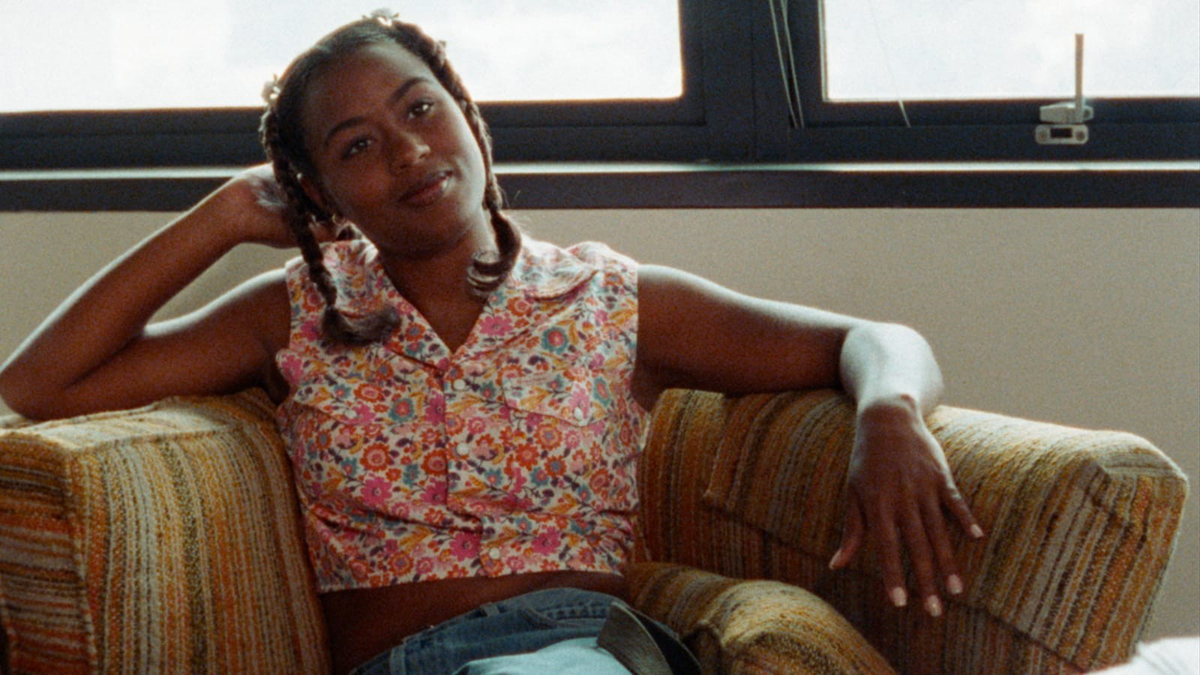
Toby Smith as Pica Sullivan in Drylongso. Courtesy FLC Press.
Drylongso, directed by Cauleen Smith, now playing at Film at Lincoln Center, New York City
• • •
Low-key yet capacious, Cauleen Smith’s Drylongso makes room for a host of different genres, all while giving viewers a very specific sense of place. The film, which played at various festivals in the late ’90s but is only now receiving a proper theatrical release in a 4K restoration, is at once an affectionate art-school razz; a study of an offbeat female friendship; a reflection on gender, race, and violence; a murder mystery; and a portrait of Oakland. The title of Smith’s first (and, to date, only) feature, begun while she was an MFA student in film at UCLA, is an African American term meaning “ordinary” or “same old thing.” Among its many pleasures, Drylongso reveals the unexpected in the everyday.
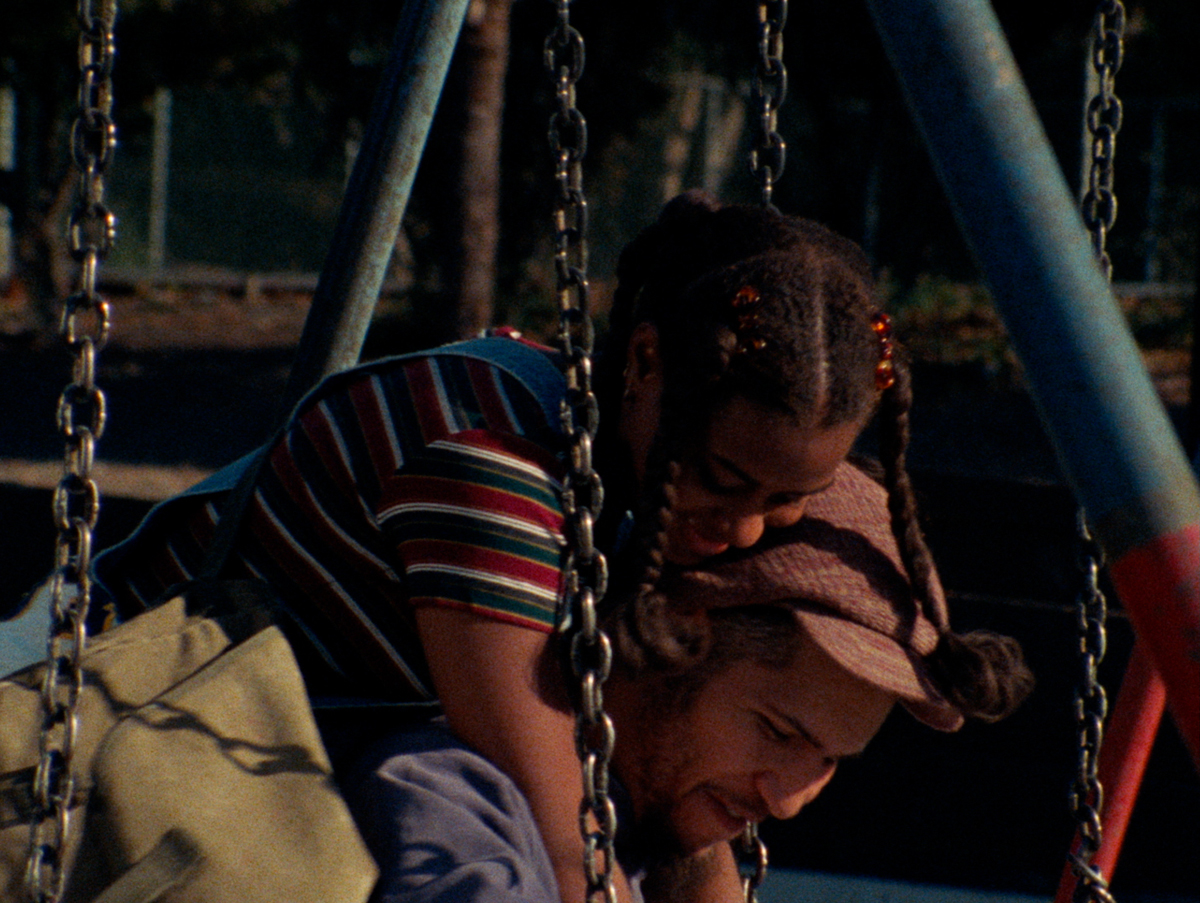
Toby Smith as Pica Sullivan and Will Power as Malik in Drylongso. Courtesy Isaac Davidson (CMPR).
The film opens with its protagonist, first-year art-college student Pica (Toby Smith), in the middle of her late-night, part-time wheatpasting gig, affixing posters announcing a community meeting to address a string of unsolved murders. In the next scene, while sitting on the porch of the home she shares with her hard-partying, self-absorbed mother (Channel Schafer) and frail grandma, she observes brutality directly, and comes to the aid of a woman, Tobi (April Barnett), who’s just been roughed up by her date.
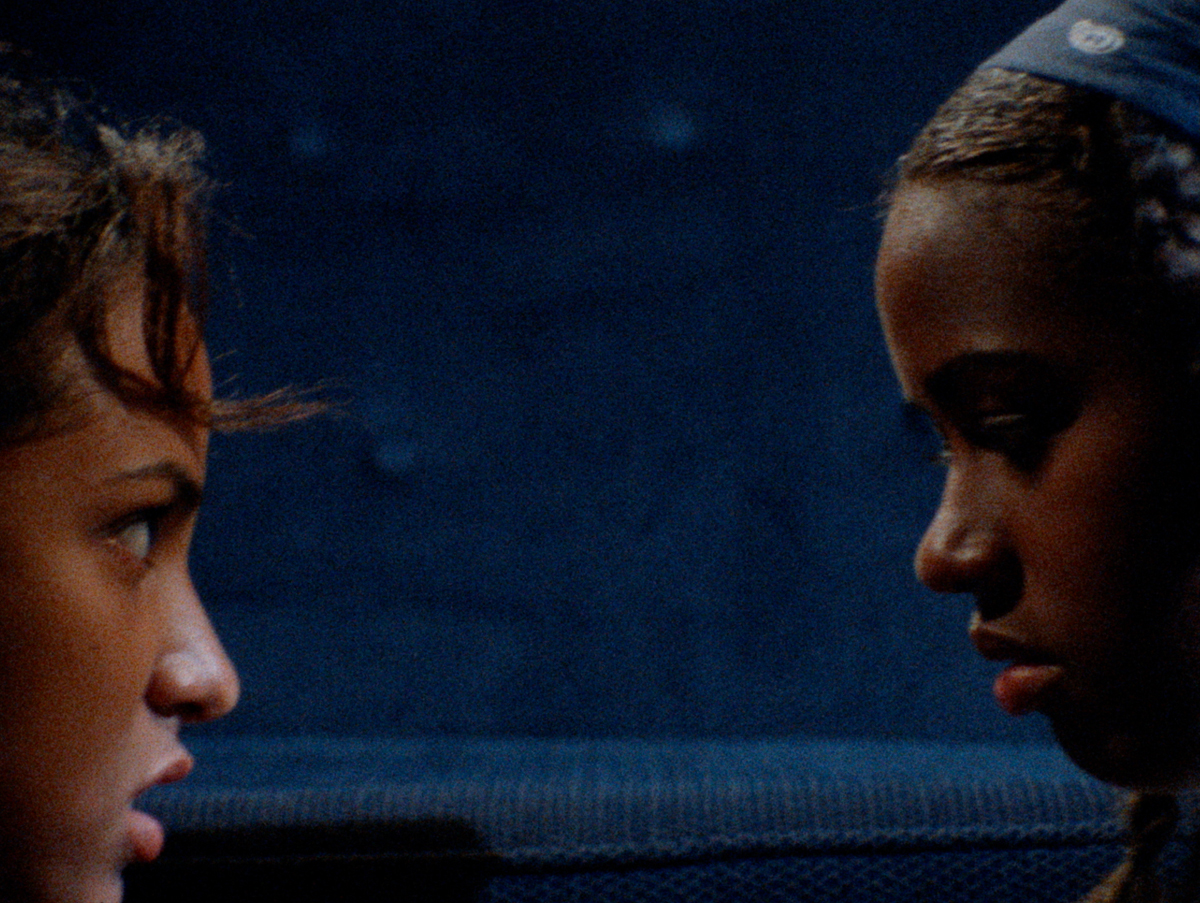
April Barnett as Tobi and Toby Smith as Pica Sullivan in Drylongso. Courtesy Isaac Davidson (CMPR).
Pica’s unofficial vocation, or at least the impetus behind her developing artistic sensibility, would seem to be bearing witness. She flouts the 35mm format of the photography class she’s taking, opting instead for a Polaroid camera, which she uses to document young Black men—who, as substantiated by a string of bleak statistics she’s memorized and rattles off, are “an endangered species.” Pica has no patience for the flaccid, grandiose assessments her classmates use when describing their own work (“These are my black-and-whites about the human landscape, searching for human expression of female sensuality,” one prattles). And she blithely disregards the disapproval of her weary yet kind photography teacher over her choice of equipment: “I came here to learn how to express myself. You gotta have a 35-millimeter camera to be expressive nowadays?” (The dashiki-clad prof is played by the effortlessly charming Salim Akil, who cowrote and coproduced Drylongso with Smith. His later credits would include directing several episodes of the much-missed Girlfriends, created by his wife, Mara Brock Akil, and the only sitcom I’m aware of to include a joke about Mary McLeod Bethune.)
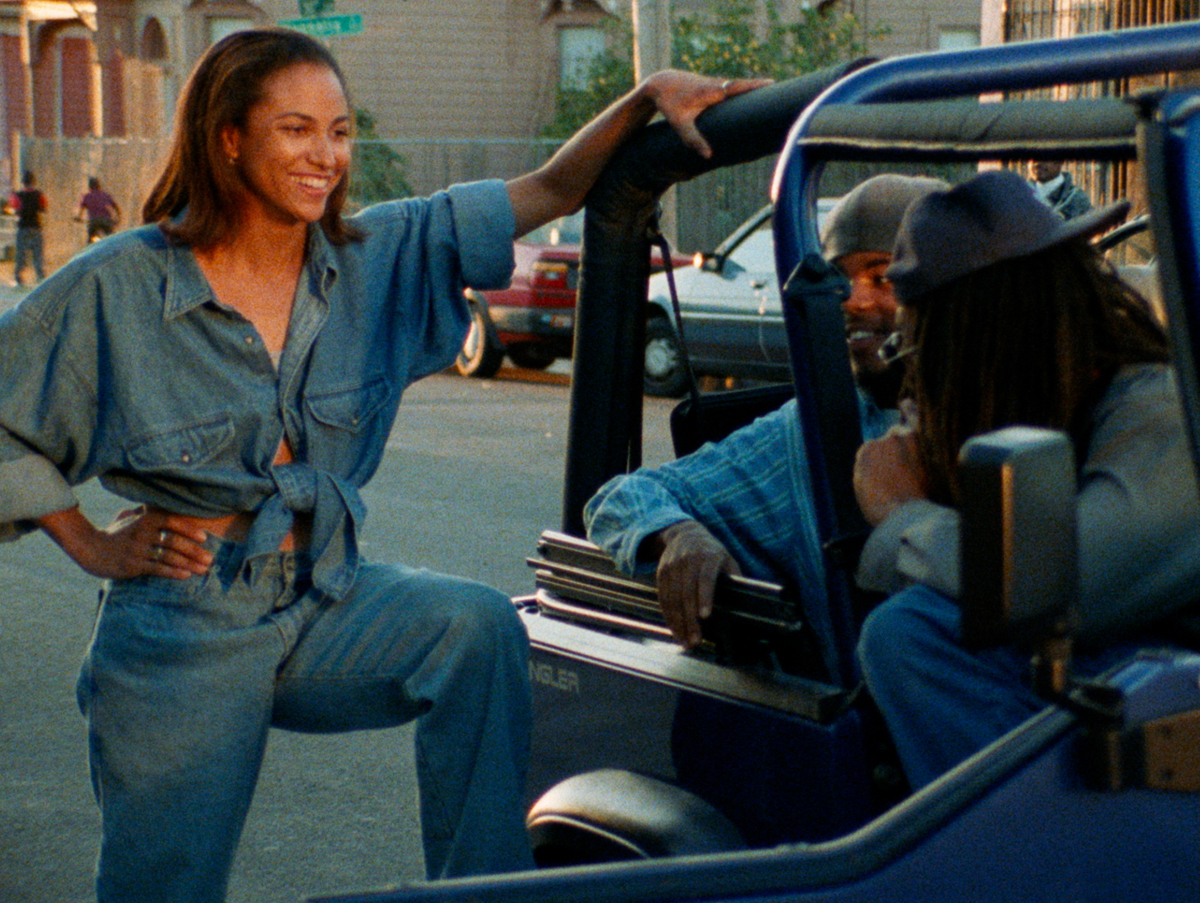
April Barnett as Tobi in Drylongso. Courtesy Isaac Davidson (CMPR).
The budding artist isn’t the only one defying convention or learning how to express herself. After her assault, the previously high-femme-attired Tobi begins donning ruffneck apparel—oversize jeans and flannel shirts, paisley bandanas—whenever she leaves the house. Her sartorial choices afford her two types of freedom. For one, she is no longer subjected to catcalling and other forms of sexual harassment—and she can move about undetected by her violent stalker ex. Additionally, she can take up more space in public, as demonstrated in a waggish scene when a series of white women nervously, exaggeratedly cede right of way to Tobi as she strolls around Lake Merritt, one of many locations in Drylongso that give the viewer a richer sense of Oakland’s splendor.
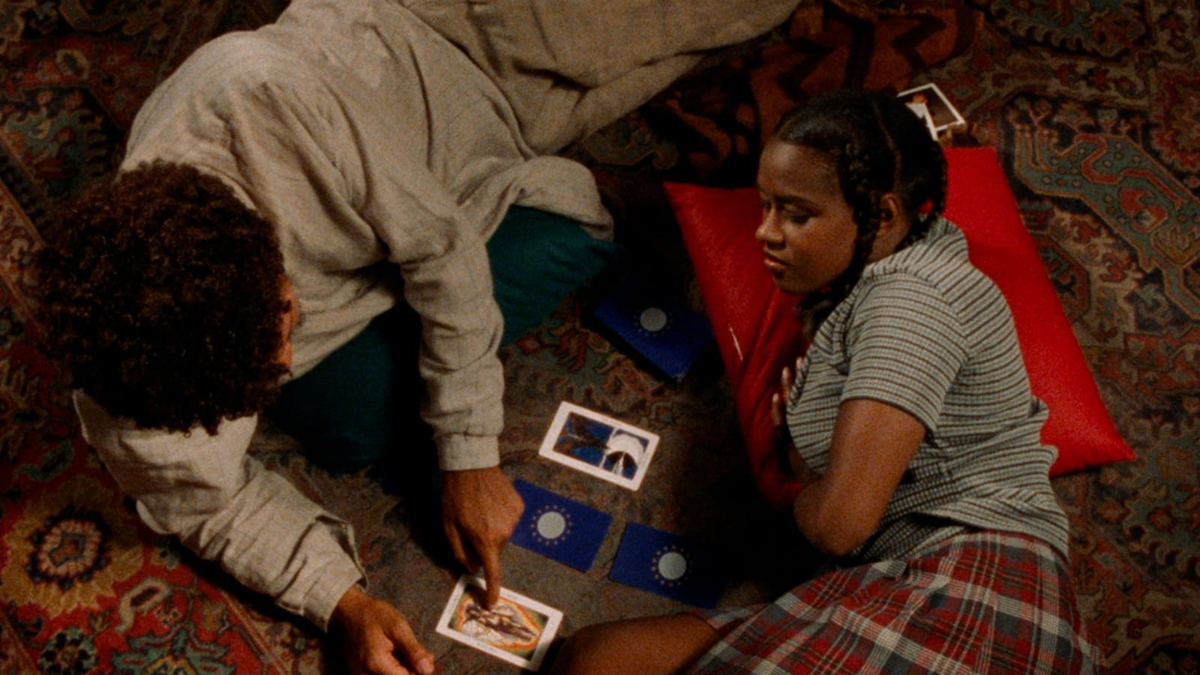
Will Power as Malik and Toby Smith as Pica Sullivan in Drylongso. Courtesy FLC Press.
Tobi’s masquerade is so successful that Pica, during their second encounter at a bus stop, asks to take a snapshot for her collection of endangered Black men before realizing that the person in a baggy hoodie is the woman she helped outside her house. As their friendship deepens, Pica occasionally questions Tobi about her garb. But mostly she casually accepts it, realizing that Tobi’s response to the world’s dangers—not only her ex but also that serial killer are both still at large—is just as valid as her own inclination to proleptically commemorate. In the midst of more violence—Malik (Will Power), Pica’s lover, meets a gruesome end—the two women, each the daughter of an absent or neglectful mother, are sustained by their bond. Tobi cares for Pica during the latter’s bout with pneumonia and shows unflagging support for her artist pal as the Polaroid project expands to an outdoor installation in an empty lot in West Oakland (a section of the city, gravid with history, where the Black Panther Party was headquartered). While soberly acknowledging grim realities, Smith’s film is more invested in acts that countervail destruction—namely, forming ties, whether platonic or romantic, and generating ideas.
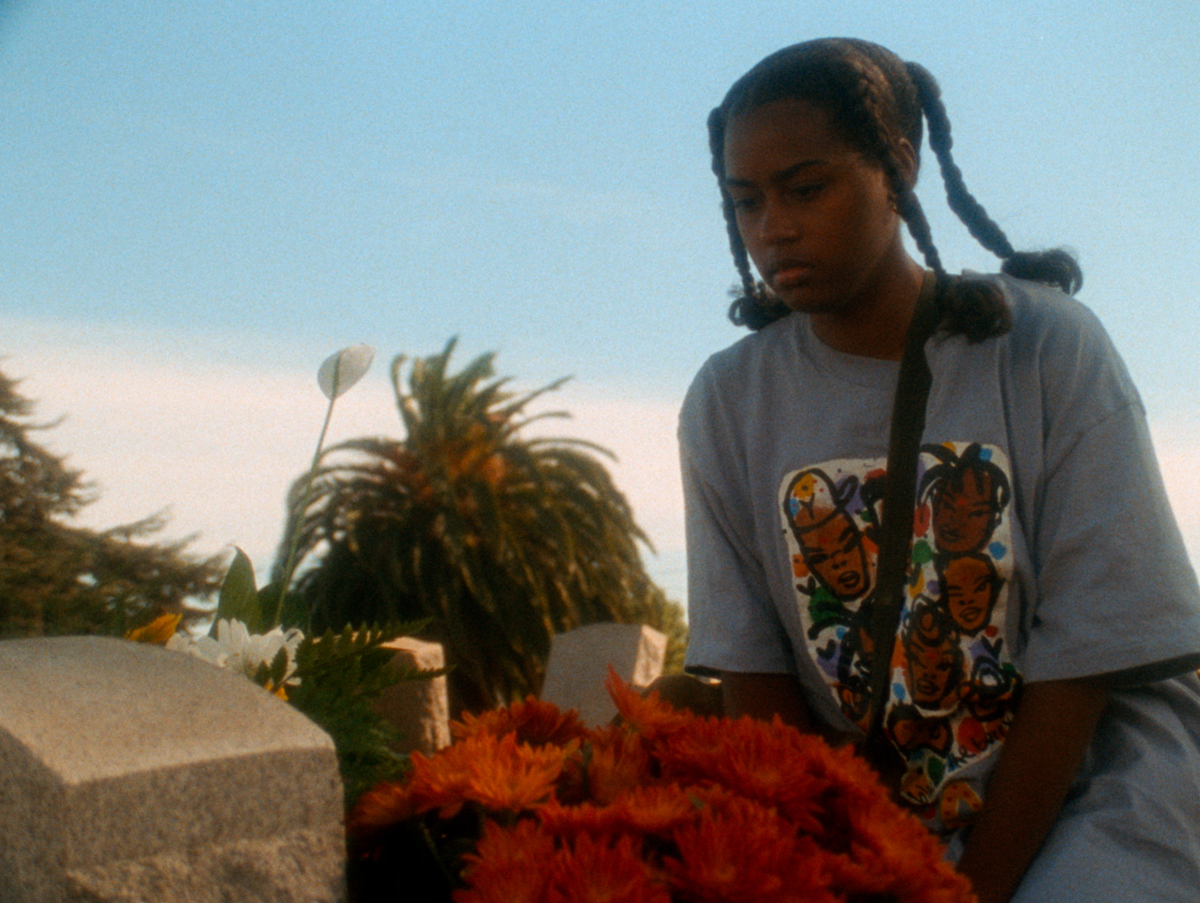
Toby Smith as Pica Sullivan in Drylongso. Courtesy Isaac Davidson (CMPR).
I first saw Drylongso in 2019 at BAMcinématek, where it screened as part of the series “Black 90s: A Turning Point in American Cinema.” The lineup in that terrific showcase revealed a dismaying fact: Smith was one of several Black female directors (Julie Dash and Leslie Harris among them) who have a lone narrative feature to their name. After Drylongso played at Sundance in 1999, Smith spent a few frustrating years in Hollywood, sometimes writing screenplays on spec and quickly realizing that the film industry was indifferent, at best, to her proposals. She gave up on the industry but never on film. A multimedia artist for the past two-plus decades, Smith has created scores of short experimental works, many of which (including those made before her feature) will screen in two programs that accompany the run of Drylongso at Film at Lincoln Center, its first stop on a scheduled nationwide tour.
In a 2017 interview—the year that In the Wake, her series of banners emblazoned with such stark declarations as “I have nothing left,” would become a high point of the seventy-eighth Whitney Biennial—Smith bluntly explained why she abandoned moviedom for museums and galleries. “The film world is not about ideas, but things that we can consume. There were fewer gatekeepers as far as control of ideas in the arts communities that I found, and so I felt really free to pursue the edges of ideas and ways of making that I found interesting as opposed to trying to conform all my values into the kind of practice that didn’t serve my interests at all.” Her words echo those of Pica—who refuses to let a set of rules, a piece of equipment, a format dictate what and how she can create.
Melissa Anderson is the film editor of 4Columns and the author of a monograph on David Lynch’s Inland Empire from Fireflies Press.